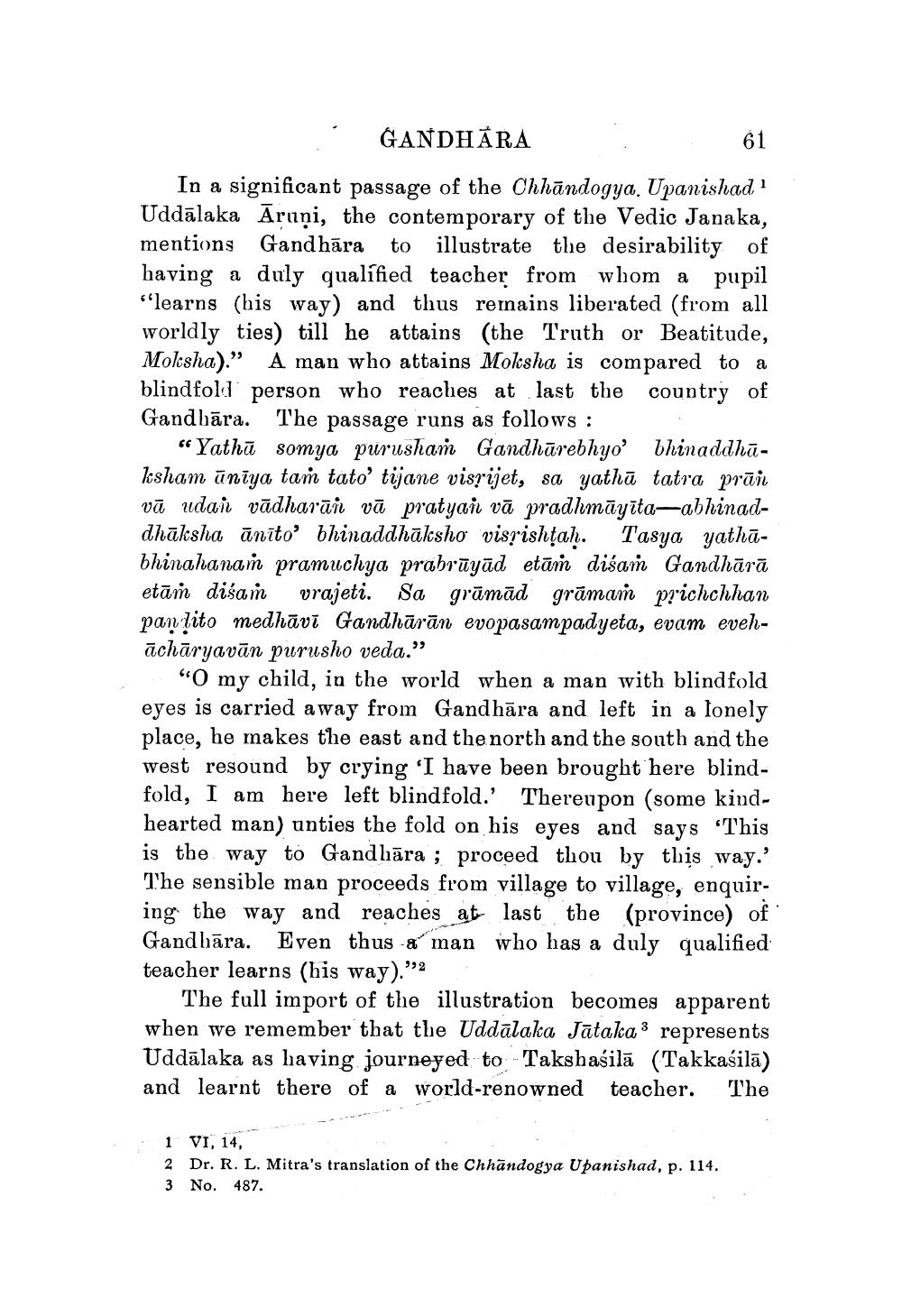________________
. GANDHÁRA
: 61 In a significant passage of the Chhāndogya. Upanishad 1 Uddālaka Āruņi, the contemporary of the Vedic Janaka, mentions Gandhāra to illustrate the desirability of having a duly qualified teacher from whom a pupil “learns (his way) and thus remains liberated (from all worldly ties) till he attains (the Truth or Beatitude, Moksha).” A man who attains Moksha is compared to a blindfold person who reaches at last the country of Gandhāra. The passage runs as follows:
“Yathā somya purusha Gandhārebhyo bhinaddhāksham ūniya tam tato' tijane visrijet, sa yathā tatra prān vā udai vādharāni vā pratyai vā pradhmāyīta-abhinaddhāksha ānīto' bhinaddhāksho visȚishțah. Tasya yathābhinahanam pramuchya prabrūyād etām disaṁ Gandhārā etām disa vrajeti. Sa grāmād grāmam prichchhan panlito medhāvī Gandhārān evopasampadyeta, evam evehāchāryavān purusho veda."
"O my child, in the world when a man with blindfold eyes is carried away from Gandhāra and left in a lonely place, he makes the east and the north and the south and the west resound by crying 'I have been brought here blindfold, I am here left blindfold.' Thereupon (some kindhearted man) unties the fold on his eyes and says "This is the way to Gandhāra ; proceed thou by this way.' The sensible man proceeds from village to village, enquiring the way and reaches at last the (province) of Gandbāra. Even thus & man who has a duly qualified teacher learns (his way).”2
The full import of the illustration becomes apparent when we remember that the Uddālaka Jātaka represents Uddālaka as having journeyed to Takshasilā (Takkasilā) and learnt there of a world-renowned teacher. The
1 VI, 14, 2 Dr. R. L. Mitra's translation of the Chhāndogya Upanishad, p. 114. 3 No. 487.




